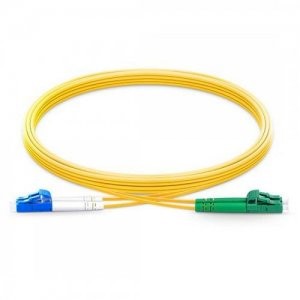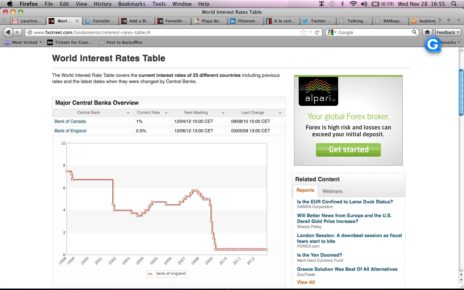In the ever-evolving landscape of data transmission and networking, the choice between fiber optic patch cords and traditional copper cables has become a pivotal decision for businesses and individuals alike.
Fiber optic technology, with its blazing speed and numerous advantages, has been rapidly gaining ground. This guest blog explores the advantages of fiber optic patch cords, shedding light on why they have become the preferred choice in today’s digital world.
The Speed Race: Fiber Optic’s Lightning-Fast Advantage
One of the most striking benefits of fiber optic patch cords is their unparalleled speed. Unlike copper cables, which transmit data using electrical signals, fiber optics employ the speed of light to transfer data.
This key distinction makes fiber optic cables significantly faster, allowing for the rapid transmission of large amounts of data. Whether it’s streaming high-definition videos or supporting real-time online gaming, fiber optic patch cords deliver a seamless experience due to their exceptional speed.
Thinner, Lighter, and More Durable
Fiber optic cables are incredibly thin and lightweight compared to their copper counterparts. This characteristic makes them easier to handle and install, reducing the logistical challenges that often accompany the deployment of bulky copper cables.
Furthermore, fiber optic patch cords are exceptionally durable, as they are immune to electromagnetic interference (EMI) and radio-frequency interference (RFI). Copper cables, on the other hand, can suffer from signal degradation due to these environmental factors, resulting in data transmission issues.
The Long-Haul Advantage: Minimal Signal Loss
In the realm of long-distance data transmission, fiber optic patch cords shine brightly. Copper cables face signal loss as data travels over extended distances, which necessitates the use of signal boosters and repeaters.
Fiber optics, with their minimal signal loss, can transmit data over much greater distances without the need for such additional equipment. This property makes fiber optic patch cords the ideal choice for applications spanning extensive areas, such as telecommunications networks and data centers.

Security Through Immunity
Security is a paramount concern in today’s interconnected world. Fiber optic patch cords offer a distinctive security advantage by being immune to electromagnetic eavesdropping. Unlike copper cables, which emit electromagnetic signals that can be intercepted, fiber optics transmit data through light pulses within the glass or plastic core. Intercepting these signals is a near-impossible feat, making fiber optic communication inherently more secure.
Bandwidth Galore: Future-Proofing Networks
As the demand for bandwidth continues to skyrocket with the proliferation of high-definition content and emerging technologies like augmented reality and 5G, the need for scalable network solutions becomes increasingly vital.
Fiber optic patch cords, with their enormous bandwidth capabilities, are well-suited to meet these demands. They can support gigabit and even terabit data rates, future-proofing networks and ensuring they remain capable of handling tomorrow’s data-intensive applications.
Green and Environmentally Friendly
In an era marked by heightened environmental awareness, the sustainability of network infrastructure is a growing concern. Fiber optic patch cords boast a significant eco-friendly advantage over copper cables.
They require less energy to transmit data over long distances and have a longer lifespan. Additionally, the manufacturing process of fiber optics produces fewer greenhouse gas emissions compared to copper cables, aligning with the global push for greener technology solutions.

Fiber Optic Patch Cords: Aesthetic Appeal
Beyond their functional advantages, fiber optic patch cords can also enhance the aesthetic appeal of data centers and office environments. Their sleek and slender design is visually pleasing and allows for more organized cable management. In contrast, the bulkier copper cables can lead to a cluttered and less organized appearance, potentially hampering the overall efficiency and accessibility of the network infrastructure.
Overcoming the Cost Barrier
While it’s true that the initial investment in fiber optic patch cords can be higher than copper cables, the long-term cost savings are substantial. Fiber optics require less maintenance, have a longer lifespan, and are less susceptible to damage from environmental factors.
Additionally, the increased speed and efficiency of fiber optic networks can lead to improved productivity and reduced downtime, ultimately translating into significant cost savings over time.
The Cons of Copper Cables: A Balanced Perspective
While extolling the virtues of fiber optic patch cords, it’s essential to acknowledge that copper cables have their own set of pros, particularly in scenarios where budget constraints and shorter distances are factors. Copper cables have a lower initial cost and are well-suited for shorter-distance applications. However, they cannot compete with the speed, security, and bandwidth capabilities offered by fiber optics.

In the ongoing battle between fiber optic patch cords and copper cables, the former emerges as the clear victor in terms of performance, speed, security, and scalability. The advantages of fiber optics extend beyond the realm of data transmission and have the potential to reshape the way we connect and communicate in the digital age.
As businesses and individuals look to the future, it’s increasingly evident that fiber optic patch cords are the smart choice for a faster, more secure, and environmentally friendly network infrastructure. So, if you’re also looking to adopt fiber optic patch cords for your business, then Fibermart is your best option for it.
Fibermart is a leading supplier and renowned manufacturer of fiber optic networking solutions. They provide high-quality fiber optic products and offer an extensive range of solutions and tools. This includes optical amplifiers, SFP+, fiber trunk cables, and a lot more. Get in touch with them today and learn why fiber optic patch cords are superior to copper cables.
About The Author
Jane Smith is a seasoned telecommunications engineer with over a decade of experience in the field. Her passion for cutting-edge technology and commitment to environmentally sustainable solutions have made her a prominent voice in the world of networking. When she’s not unraveling the complexities of data transmission, you can find Jane exploring her love for photography or advocating for green technology initiatives.





